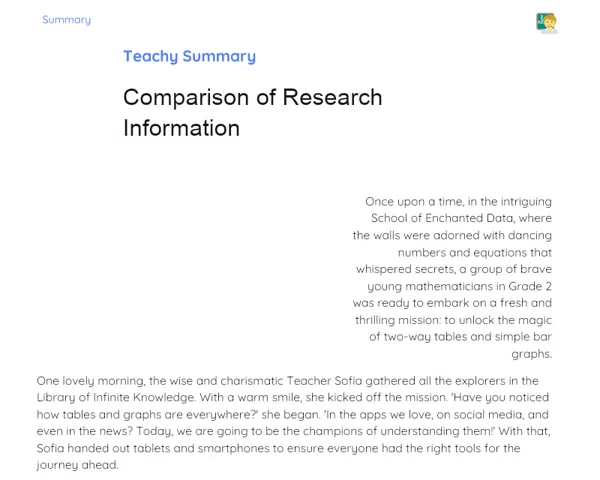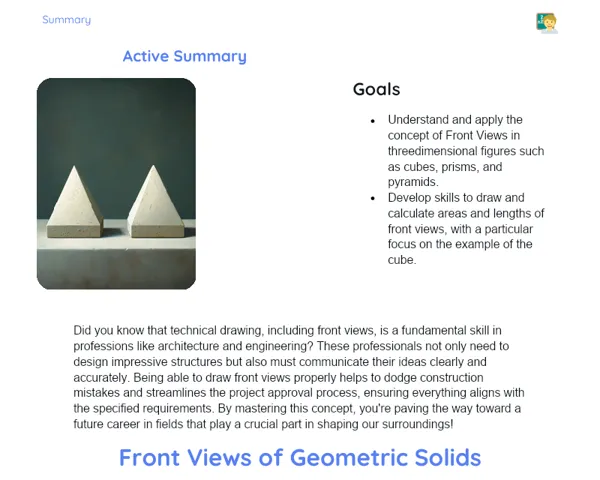Objectives
1. Understand and apply the formula to calculate the area of a trapezoid: S = h(B + b) / 2.
2. Develop practical skills to solve real-world problems involving area calculations, such as land sizing or event space planning.
Contextualization
Did you know that being able to calculate the area of shapes like trapezoids is vital in fields like architecture and urban planning? Architects and planners often deal with irregularly shaped land, where having a solid grasp of area calculations is key to making the most of space. So, getting the hang of the trapezoid formula doesn’t just mean you're learning math; it equips you with valuable skills for future careers in various technical and engineering disciplines!
Important Topics
Trapezoid Area Formula
The formula for calculating the area of a trapezoid is S = h(B + b) / 2. Here, 'h' is the height of the trapezoid, while 'B' and 'b' are the lengths of the longer and shorter bases, respectively. This formula is invaluable, particularly when tackling spaces that aren’t perfectly rectangular, which is commonplace in situations like construction sites and urban design.
-
The height (h) is always the straight-up distance between the two bases, no matter the angles of the sides.
-
The bases (B and b) can vary in length, which sets trapezoids apart from rectangles or squares.
-
This formula serves as a perfect example of how maths intersects with real life, solving intricate space and design challenges.
Practical Applications of Area Calculation
Calculating the area of trapezoids has a wide variety of real-world uses, including urban planning, interior design, and architecture. For example, architects tap into this skill to make the most out of oddly shaped spaces, and engineers might need to determine how much building material is necessary based on plot sizes.
-
In urban planning, knowing how to calculate the area of irregular plots is crucial for developing public and private spaces efficiently.
-
In architecture, the formula helps designers create buildings that fit well into the existing, often unusual environment, maximising every square meter available.
-
Setting up outdoor events often involves temporary structures placed in irregular spaces, making precise area calculations essential for logistics and safety.
Challenges in Applying the Formula
While the trapezoid area formula is straightforward on paper, putting it into practice can pose its own set of challenges. This might involve accurately measuring the bases and height on uneven land and accounting for variations that could affect measurements.
-
Getting the measurements spot-on is vital, as mistakes can lead to erroneous area calculations and affect the entire project.
-
Plots that are sloped or uneven require adjustments in how we measure height, which must always be perpendicular to the bases.
-
Gaining practical experience and utilising modern measuring tools can help tackle these challenges and ensure accurate calculations.
Key Terms
-
Trapezoid: A four-sided shape with at least one pair of parallel sides, known as the bases.
-
Area: The measurement of the internal space of a two-dimensional shape, expressed in square units.
-
Larger Base (B) and Smaller Base (b): The parallel sides of a trapezoid, where one typically exceeds the other in length.
-
Height (h): The straight-up distance between the bases of a trapezoid.
For Reflection
-
How can calculating the area of a trapezoid impact the design of a public space you often visit?
-
Why is it crucial for professionals such as architects and urban planners to fully grasp and correctly use the trapezoid area formula?
-
In what ways can collaborating with teammates enhance accuracy and efficiency when tackling area calculations in real-life projects?
Important Conclusions
-
In summation, we’ve explored the formula S = h(B + b) / 2 for calculating the area of a trapezoid, which is essential knowledge not just for mathematical exercises but also for practical applications ranging from architecture to urban planning.
-
Mastering how to calculate the area of shapes like trapezoids is crucial for many technical careers and also aids in daily tasks, such as planning space for events or making the best of land use.
-
We’ve also touched on the real challenges that may pop up when using these formulas, like the necessity for accurate measurements and taking terrain variations into account, highlighting the importance of mathematical precision in practical scenarios.
To Exercise Knowledge
- Draw a trapezoid on graph paper and work out its area using the formula we covered. 2. Use everyday items to set up an event layout in a trapezoidal space and calculate how much space each object takes up. 3. Explore a park or open area in your neighbourhood and try to estimate the area of any trapezoidal segments you spot, applying the formula.
Challenge
Plan out the layout for a small music festival on a trapezoidal plot, including stages, food zones, and rest areas. Calculate the total area needed and tweak the design to maximise space use!
Study Tips
-
Practice the formula by figuring out the area of trapezoids you find in magazines or newspapers featuring photos or ads that showcase this shape.
-
Make flashcards with different area calculation problems and practice with friends or family to reinforce your learning.
-
Use drawing or modelling applications to visualise trapezoids and other geometric shapes, enhancing your understanding of their properties and measurements.



